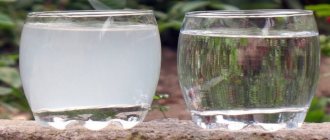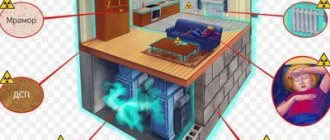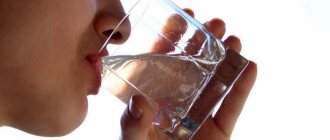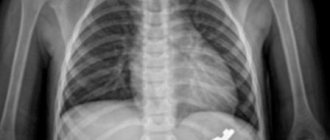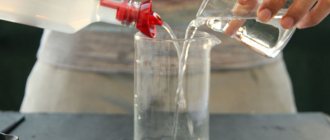The days when a dentist removed a tooth without using anesthesia are long gone. Now this procedure has been replaced by less painful and proven methods of pain relief. These include the application of arsenic, or more precisely, arsenic paste.
Arsenic
- Why is arsenic placed in the tooth?
- How long to keep the medicine in the tooth?
- How to remove arsenic?
- Is arsenic in the tooth harmful?
- Is arsenic paste harmful during pregnancy?
- Why does a toothache with arsenic hurt?
Why do they put arsenic poison in the tooth and is it harmful?
To remove the pulp, it is first killed. For this purpose, arsenic, or rather pastes based on it, has been used in dentistry for many years. And although during this time many different anesthesia, effective and modern, have appeared, it is still used to this day, although not as often as before. Although this is quite a difficult matter. If you do not accurately calculate the dosage of the drug or the time it should remain in the tooth, there may be unpleasant side effects for the tooth, and even for the patient’s entire body.
Photo ↑
Arsenic can be in the form of a white or colored mass (for example, blue) - some manufacturers add a special dye so that the doctor can better see the location of the medicine and can completely remove it.
Photo: Arsenic in the tooth
Photo: Tooth after treatment
What is the purpose of adding arsenic?
Arsenic is known as a toxic substance, its degree of danger is very high. But based on it, necrotizing pastes have been developed, which have been used in dentistry for a long time.
To this day, pastes containing arsenic are used to necrotize the pulp of a diseased tooth.
They are still used in situations where it is impossible to use modern drugs for pain relief. Most often due to the patient's individual intolerance to anesthesia or when there is an urgent need to kill the nerve during treatment.
Treatment procedure
The procedure for removing the nerve is a two-step process.
At the first stage, the dentist opens the tooth cavity affected by caries, removes dead tissue that has already been affected by the disease, and thoroughly cleans the inside of the tooth with a bur so that there are no infected areas left. A preparation containing arsenic is placed into the cavity prepared in this way. The cavity is then closed with a temporary filling. The patient goes home and soon returns to complete the tooth treatment, after a certain period of time, which is set by the doctor.
The second stage is that the dentist removes the temporary filling, removes the paste with arsenic, and cleans the inner surface again, determining by the remnants of the dye that is in the paste that it has not yet been completely removed. Before removing the nerve, the dentist must ensure that there are no traces of arsenic inside the tooth.
At the end of the treatment procedures, the patient may be sent for an X-ray of the tooth to make sure that everything was done correctly and the treatment was effective.
Effect of arsenic
In tissues where arsenous anhydride acts, disruption of normal cell respiration may occur. Even a small amount of the drug affects the dilation of blood vessels and can lead to hemorrhages. Most of the components decompose in the nerve fibers. Such changes are directly proportional to the dosage of the substance and the duration of its effect. The drug with arsenic is used when there is a need to remove nerves and pulp.
On a note! It is absolutely prohibited to drink alcohol after adding arsenic paste, as its effects are enhanced and the risk of intoxication becomes very likely.
What is arsenic
What does arsenic look like in examples?
The patient will not be able to look at the arsenic that is in his tooth; it is sealed with a temporary filling. If it suddenly falls out, you need to be sure that there is no paste with arsenic in your mouth. You should rinse your mouth with a soda solution with iodine, plug the hole in the tooth with a ball of cotton wool or bandage, and consult a doctor immediately or as quickly as possible.
If the top of the tooth is bluish, it means arsenic has come into contact with it.
It is possible that some of the paste was swallowed. There is no need to be afraid, the dose is not lethal. But just in case, to neutralize its negative effects, you need to drink 200-250 ml of milk.
Why might you need to extract arsenic yourself?
Arsenic paste has a high toxicity rate. It needs to be taken out in time. If it remains in the tooth for more than a week, inflammation of the soft dental tissues and other negative processes develop, which include:
- swelling of the pulp;
- darkening of dentin;
- drug-induced periodontitis;
- death of the periosteum and bone;
- necrotic effect on adjacent teeth.
It is necessary to keep the substance for the prescribed time and not violate the terms of its withdrawal. Just in case, you need to know how to remove arsenic from a tooth yourself. With prolonged exposure to the paste, complete intoxication of the body can occur. And also negative phenomena can occur with an incorrectly calculated dose.
Due to such a high risk of adverse reactions, the drug is used very rarely, although it used to be quite common.
The patient should be attentive to the timing of use of arsenic paste and do not forget to visit a doctor. You need to know when to get the pasta. Despite its necrotic and analgesic effect, the substance located in the tooth can cause pain, which also requires its immediate removal.
A tooth with arsenic hurts - it needs to be removed
The causes of pain are the following:
- the substance does not kill nerve endings, since it is not concentrated enough;
- long duration of action of certain drugs;
- inflammation of tooth tissue;
- necrosis in the area of the periosteum or jawbone;
- substance intolerance;
- incorrectly inserted paste.
Any of these reasons causes pain, which should alert the patient and remove the substance. You need to immediately consult a doctor or, at first, get the paste yourself. When a person removes a substance himself, he must understand that subsequent treatment cannot be avoided.
How long to keep arsenic?
The duration depends on the complexity of the dental problem being solved. The minimum period of nerve killing is 48 hours. If we are talking about a tooth with one root, then the nerve can be killed by arsenic in one day. The maximum that is allowed for using such pastes is 3 days.
How long can a child keep arsenic?
When treating baby teeth, arsenic is applied for a shorter period - from 16 to 24 hours. If you leave arsenic paste inside the tooth, then negative consequences and complications are likely:
- Dentin darkens
- The body becomes intoxicated
- Periodontitis due to exposure to paste (medicinal)
- Pulp swelling
- Dieback of the periosteum
The dangers of using arsenic in dental treatment
Now dentists try to use arsenic as little as possible.
This is due to the seriousness of side effects and the growing number of contraindications:
- Allergic reactions of patients to paste components
- Childhood
- Tooth canals are severely crooked
- There is a possibility of increased intraocular pressure
- Presence of kidney disease
- The integrity of the root may be affected
The use of arsenic during pregnancy is undesirable
They try not to use arsenic-based pastes for depulping teeth in pregnant women due to the unstudied effect of such drugs on the unborn child and its intrauterine development.
A temporary filling falls out quite often, so toxic components, although in small quantities, enter the oral cavity or stomach. Therefore, there is a high probability of arsenic poisoning of a dental patient.
If you are personally intolerant to the components of the paste, problems with the liver and gastrointestinal tract may occur after its use.
In dental treatment in children, arsenic is rarely used, with great caution, and only if the tooth roots are fully formed.
Possible complications when installing a filling
Most often, when installing a filling, complications arise if the arsenic is overexposed or the dose is incorrectly calculated. It is possible that:
The relationship of the teeth with the organs of the body can always have potential effects if there is a disturbance in the corresponding area of the tooth. Holistic dentistry developed because teeth and jaw diseases can cause serious health problems in other parts of the body. Teeth can make you sick, so oral health and hygiene are important.
Dead teeth are a chronic source of inflammation because bacteria, toxins, protein breakdown products and allergens can continually diffuse from the tooth into the bloodstream and cause damage to distant areas of the body. Dead teeth can "poison the dental pulp corpse" with the blood of the whole body, because hidden bacterial herds can be with bacterial poisonous triggers for various diseases.
More details about the pros and cons
How to remove paste with arsenic from a tooth yourself?
Dentists have a negative attitude towards patients removing the drug themselves, and it is difficult to do it completely at home. But there are times when it needs to be done. For example, when the clinic has a day off or a holiday, and the treatment was emergency, and it’s time to remove the composition. Or the filling fell out prematurely. If you need to remove arsenic, for example, on a hike, away from the city. How it's done? If the temporary filling is in place, it can be pulled out using the needle of a disposable syringe or a sewing needle. The material of such a filling is not very durable. If the filling is no longer present, you need to remove the arsenic composition. First, the needle or tweezers are disinfected in alcohol and the paste is removed. After this, the mouth is thoroughly rinsed with a solution of bicarbonate (soda) with hydrogen peroxide or iodine. The hole in the tooth must be closed with a cotton or gauze swab. After this, you need to contact your dentist as soon as possible. Otherwise, the likelihood of severe inflammation and other dental complications increases.
How to remove paste yourself?
Such manipulations are usually not recommended. This is dangerous and, moreover, problematic. But sometimes it is necessary to remove arsenic, but the clinic does not work for one reason or another. They remove the product independently and urgently when the temporary filling falls out for various reasons.
The seal is removed using a sewing needle or a syringe attachment. Typically, the compositions of temporary fillings are not too hard. Arsenic paste is also pulled out with a needle or tweezers. Tools are subject to mandatory pre-treatment with alcohol. Add iodine or hydrogen peroxide to the soda solution and rinse your mouth. The open tooth cavity is covered with a cotton swab.
Interesting: A glass of milk may also help. This product converts the main active ingredient of the composition into an inactive form.
Important: Do not drink alcohol while there is arsenic paste in the tooth! Alcohol will enhance the effect of each component.
You cannot put off visiting a doctor for a long time. If there is no qualified dental care, an inflammatory process may develop. The risk of complications will increase significantly.
Should pain occur during such treatment and how to get rid of it?
How long does it take for a tooth to be bothered after placing arsenic under a temporary filling?
After removing the temporary filling with arsenic, further treatment is painless
If the dentist performed all the manipulations correctly, then there should be no pain at all. Because the paste contains a component with an anesthetic effect - this is the first thing. Secondly, nerve necrosis under the influence of arsenic means that the tooth loses sensitivity completely.
Why can a tooth with arsenic hurt?
- The pulp is closed and the paste is applied on top
- Manifestation of allergies
- Low concentration of paste components
- Inflammation of tissues near the tooth
- The paste was kept longer than necessary
The presence of such pain must be reported to the dentist immediately; it cannot be tolerated. This pain may indicate serious complications during treatment that need to be addressed urgently. There is no need to use painkillers yourself. It is unknown whether they will be combined with arsenic. In addition, such a drug is itself a strong anesthetic. Therefore, there is no need to look for an even more powerful one if this one does not work. It is necessary to understand the causes of toothache as quickly as possible and eradicate them.
What to do if you have severe pain?
To relieve pain before visiting the dentist, you can use one of the following:
- To remove the sour taste after installing arsenic, you need to rinse your mouth with a soda solution. This remedy will remove the unpleasant sensation and prevent burns to the oral mucosa if there are residues of the substance there.
- A glass of milk will help relieve pain and remove toxins from the body. Proteins neutralize the effects of arsenic without interfering with its main function.
- For severe pain, you can take Nurofen, ibuprofen or other painkillers.
If there are no signs of inflammation, severe pain does not go away for several days and painkillers do not help, you need to remove the cause - arsenic paste. It's better if a doctor does it. But when a visit to the dentist is not possible, you can carry out the procedure yourself.
- Prepare a needle and tweezers.
- Wash your hands thoroughly and sterilize instruments with alcohol.
- Carry out all manipulations in front of a mirror.
- Using a needle, crumble the temporary filling and use tweezers to pull out the entire contents.
- Prepare a warm solution of water with soda and a few drops of iodine, rinse the mouth.
- Pay special attention to the diseased tooth.
- Prepare a sterile cotton swab and cover the filling site with it.
- Change your tampon and rinse after every meal.
- Visit your dentist as soon as possible.
Description, composition and properties of arsenic used in dentistry
Arsenic is a chemical substance that in large quantities has an extremely negative effect on the human body. However, small doses of this drug are successfully used in dentistry.
Photo: arsenic in a tooth
Arsenic looks like a steel-colored filling interspersed with a green tint. Some arsenic pastes have a rich blue color, which makes it easy to distinguish the drug from the filling material.
Arsenic has been used in dental treatment since the 19th century. But today, the use of this substance in its pure form is not practiced; to remove the nerve (pulp), a compound based on its anhydride is used, which is called arsenic paste and has the following composition:
- Anhydride, which has a devitalizing effect on the pulp – 35%.
- Components that relieve pain and make the process of pulp necrosis painless for the patient – 30%.
- Antiseptics, which are needed so that the dying area of the pulp does not cause intoxication of the body - 5%.
- The binding component, thanks to which you can “wear” the paste in the tooth cavity for the required number of days – 1%.
- Filler that allows you to apply the paste in portions – 29%.
Why do you need arsenic in the tooth?
To find out why arsenic is placed in a tooth, you need to understand how it acts on soft tissue. Initially, doctors knew only the anesthetic properties of this substance, then they found that it was toxic and could have a destructive effect on tissue. That is why dentists began to use pastes based on arsenic anhydride, but even in this form the substance remains highly toxic.
Arsenic anhydride kills (dissolves) pulp tissue - blood and lymph vessels, nerve endings. After the blood vessels die, the blood supply to the pulp stops and it touches the nerve, the transmission of nerve impulses becomes impossible, which means that after applying a paste with arsenic, the tooth no longer hurts.
During pregnancy and breastfeeding ↑
People often ask whether it is possible to agree to dental treatment during pregnancy using this remedy, and why this drug is dangerous for the woman and the fetus.
During such a crucial period as pregnancy or breastfeeding, it is prohibited to use arsenic-based devitalizing drugs. Despite the small dose of the drug administered into the tooth cavity, toxic effects on the fetus or absorption of arsenic into breast milk cannot be ruled out.
When treating a tooth, be sure to notify the dentist about your pregnancy.
At the moment, there are a sufficient number of means that do not contain arsenic to promote the death of pulp. Their use is safe for both the health of the child and the mother.
Indications and contraindications for applying arsenic paste
Arsenic is placed in the tooth if there are the following indications:
- All types and forms of inflammation of the pulp tissue with fully formed tooth roots.
- Inability to perform vital pulpectomy, which is a faster and safer method of pulp removal. This procedure is not performed when the patient is at high risk of developing an allergic reaction to anesthetic drugs.
- The need to provide emergency dental care when there are no other ways to soothe severe pain due to pulpitis.
Arsenic paste is not installed if there are contraindications:
- Allergy to arsenic.
- Unformed roots.
- When the root canal is perforated.
- If intraocular pressure is high and the patient is at risk of developing glaucoma.
- For women - during pregnancy and breastfeeding.
Experts do not recommend using a pulp devitalization method such as arsenic paste when treating children. The reason is that children often accidentally or intentionally remove a temporary filling, and the paste falls out into the oral cavity. It is unknown how strong a negative impact arsenic can have on the organs and systems of a child’s body.
Use of the drug in pediatric dentistry ↑
Arsenic-based drugs for pulp necrosis in children are used only in cases where it is not possible to use modern anesthetic drugs (for example, an allergic reaction to anesthetics).
The use of devitalizing pastes in pediatric dentistry is also indicated if the child is afraid of any injections. Then arsenic is a necessary measure to spare the child’s psyche.
But whatever the reasons for applying devital paste, it is worth keeping in mind that arsenic-containing preparations are used only when the roots are formed. If this rule is not followed, there is a high probability of developing periodontitis.
Video: treatment of pulpitis in children
How many days can arsenic be kept in a child’s tooth?
The length of time a child can stay with a drug containing arsenic is significantly shortened compared to the time period for adults.
If the devitalizing paste is applied to the exposed pulp, then a repeat visit to the dentist should be no later than 16 hours after the first treatment.
When using the indirect method (arsenic is in the carious cavity, but the pulp chamber is not opened), the period of exposure to the drug increases to 24 hours.
How does the devital pulpectomy procedure occur?
When a patient comes to the clinic complaining of severe tooth pain, doctors immediately suspect pulpitis. But for an accurate diagnosis, in addition to a general and instrumental examination, it is necessary to take an X-ray of the problem area. After making the decision to remove the pulp, everything happens in the following sequence:
- Professional cleaning of a damaged tooth, sometimes the entire dentition.
- Opening a carious cavity.
- A devitalizing paste is applied to the exposed pulp or unopened pulp chamber.
- Using filling material, a temporary filling is installed, and the patient is sent home.
How long can adults and children walk with arsenic in their teeth?
The duration of devitalization depends on what specific drug is applied. The safer the product, the slower it acts, and the longer you will have to walk with it. If the doctor prescribed the latest generation drug, the patient will have to “wear” it for a week or even two.
Frequently asked questions ↑
Are alcohol and this drug compatible?
It is better not to combine alcohol with medications at all.
Due to the fact that arsenic-containing pastes are complex in composition, alcohol enhances the effects of each substance and negatively affects the vital functions of the body.
And although the dose of arsenic put into the tooth is insignificant, it is not worth the risk. Moreover, the abstinence time is only a few days.
Why does my tooth hurt?
This situation often happens when arsenic is added, and the tooth hurts.
This happens most often for the following reasons:
- Arsenic has a multifaceted effect on the tooth, and in addition to the death of the nerve, it leads to swelling of the tissues, disruption of blood circulation in them, and dilation of blood vessels, both in the tooth and in the periodontium. As a result, a painful reaction may occur.
- Most arsenic-based drugs contain an anesthetic, such as lidocaine, but the analgesic effect may be weak due to the body's low sensitivity to this type of painkiller.
- Another cause of tooth pain can be an incorrectly selected dose of the drug. With pulpitis, there is already inflammation of the neurovascular bundle, and an insufficient dose of devitalizing paste does not help to reduce inflammation, but, on the contrary, to intensify it.
- Prolonged stay of arsenic in the tooth also leads to pain. This is due to the toxic effect of the drug on surrounding tissues and the development of inflammation at the apexes of the roots.
- A rare but possible option is intolerance to arsenic and its components.
- Sometimes a tooth with arsenic may hurt not at all because of the medicine, but because of an incorrectly placed temporary filling. It puts pressure on the gums, and the body responds to such harsh pressure with pain. Also, a temporary filling placed on arsenic that is too compact can cause significant discomfort in the tooth.
Whatever the cause of tooth pain, you need to see a doctor immediately. Only he will be able to adequately assess the situation and find the true reason for such a reaction.
Is it possible to get poisoned by the drug during treatment?
With proper installation of the devitalizing paste and temporary filling, poisoning of the body is impossible.
However, it is extremely important to observe the time frame and not walk with the drug in the tooth for longer than the prescribed time.
How long should you wear retainers after braces? The answer is in this article.
Interested in the cost of installing braces made of different materials? Price comparison here.
zubzone.ru
If something went wrong
Sometimes the treatment process does not go at all as planned by the dentist. And the patient, being at home, does not always have the opportunity to ask the doctor what to do in an unusual situation. Therefore, it is advisable to find out the answers to more common questions that people with arsenic in their teeth have.
Can arsenic not kill the nerve in a tooth?
There are situations when arsenic does not kill the nerve in the tooth. This can happen if:
- The paste was removed too early.
- Insufficient paste was applied.
- The procedure was carried out in violation of protocol.
Why does a tooth hurt under arsenic paste?
Toothache in the first 2–3 hours after applying the paste is normal. Pathological pain occurs in the following cases:
- When an insufficient dose of paste was applied, especially if the tooth is multi-channel.
- If overexposure to the paste provokes necrosis of gum tissue or alveolar processes.
- If the patient has an individual intolerance to any components of the drug.
- When a temporary filling is placed incorrectly, which is why it puts a lot of pressure on the tissue of the still “living” pulp.
- It may not be the tooth itself that hurts, but the inflamed tissues that surround it.
What to do if a temporary filling falls out and the paste gets on the mucous membrane
Sometimes temporary fillings actually fall out of the tooth, but more often they are removed by the patients themselves. For example, many children remove the filling and paste out of curiosity, and adults - because of unbearable pain. There are also frequent cases when patients do not have the opportunity to visit the doctor on time, and they remove the filling and paste so as not to overexpose it in the tooth. It is worth familiarizing yourself with the precautions that can be taken in such cases at home:
- If, after the filling has fallen out, the arsenic is still in the tooth, you need to remove it using a thick sterilized needle.
- You should rinse your mouth thoroughly with plain water or a weak soda solution.
- It is imperative to place a cotton ball on the exposed pulp.
If possible, you can buy a special dentin paste at the pharmacy, which can replace temporary filling material and seal the tooth cavity with it.
How to remove arsenic from a tooth yourself at home, remove a temporary or old filling?
In modern dentistry, arsenic is used quite rarely. However, in some cases, the use of this toxic substance is the only way to cope with toothache.
After removing the old filling and placing arsenic paste into the cavity of the diseased tooth, a temporary filling is installed so that the pulp killing agent holds well and does not enter the patient’s body. The dentist extracts the arsenic after a certain time.
However, sometimes it becomes necessary to remove it yourself. In this case, you need to follow the rules, otherwise you can only do harm.
In what cases may it be necessary to independently remove arsenic or a filling?
Arsenic is used when it is necessary to kill the nerve in order to eliminate painful sensations in the tooth. This toxic substance is used in doses sufficient to affect the nerve endings and tissues of the dental system, but safe for the patient’s health if a number of conditions are met. These include:
- exclusion of contraindications to the use of the drug;
- installing a temporary filling over the poison placed in the cavity of the affected tooth;
- strict adherence to the residence time of arsenic in a dental unit.
This toxic substance is highly toxic. If it is not obtained in time, serious complications may develop. The likely consequences of leaving arsenic in the tooth cavity for too long (more than 7 days) include: (more details in the article: how does arsenic affect the tooth and why is it placed?)
- inflammatory processes in soft dental tissues;
- pulp swelling;
- darkening of the enamel;
- drug-induced periodontitis;
- severe damage to the periosteum and bone;
- development of pathological processes in neighboring teeth.
In addition, if the toxic substance is not removed for too long, intoxication of the body can occur.
Sometimes unforeseen situations arise when, for some reason, it is not possible to remove a temporary filling and remove arsenic in a dental clinic. In such cases, the only way out is to remove the toxic substance yourself, and you will first have to pick out the filling material.
In addition to observing the timing of the arsenic paste in the tooth, you should monitor your well-being. If pain occurs, you must immediately remove the substance. After extraction, in any case, you need to see a doctor for further treatment.
How to get rid of arsenic?
Before placing arsenic, the old seal is removed and a new one is installed to seal the toxic substance.
Since in this case a soft filling material is used, the temporary filling may fall out prematurely (for more details, see the article: what to do if the filling falls out of the tooth?).
If it is not possible to immediately consult a doctor, the arsenic paste should be removed independently as quickly as possible. Arsenic is removed as follows:
- Teeth are thoroughly cleaned of plaque.
- Hands are washed with soap. Their disinfection with an antiseptic is a mandatory step in preparation for the procedure. For this purpose, you can use any alcohol-containing drink. If you don’t have vodka or alcohol at home, you can use a solution of potassium permanganate.
- Small tweezers or a needle are treated with an antiseptic.
- Using one of the instruments, arsenic is removed from the dental cavity. You need to act as carefully as possible, without violating the integrity of the substance. For convenience, it is recommended to use a mirror. The workplace must be provided with good lighting.
- After the poison is completely eliminated, the oral cavity is rinsed with chamomile decoction, soda solution or an antiseptic.
- A piece of sterile cotton wool or gauze should be placed in the area from which the arsenic was extracted. This measure will avoid contact of food with the dead nerve.
READ ALSO: how and with what can you quickly kill the dental nerve at home?
While using arsenic paste, it is not recommended to plan long trips, so that if any painful symptoms occur, you can consult your doctor. Often, teeth that are treated with arsenic are subsequently destroyed, resulting in the need to restore them with a crown.
INTERESTING: Is it possible to put a filling with arsenic in a tooth during pregnancy?
How to remove a temporary filling?
Patients often remove temporary fillings at home. Experts note that this is not recommended. However, it is better to remove the filling material and arsenic on your own than to delay the time it remains in the tooth cavity. Removing the seal looks like this:
READ ALSO: what to do if your tooth hurts after installing a temporary filling?
- After brushing your teeth, you should thoroughly wash your hands and treat them with vodka, alcohol or potassium permanganate dissolved in water.
- The needle, tweezers or toothpick are disinfected.
- Looking in the mirror, you need to carefully pry off the filling with a needle, trying not to injure the gum tissue.
The instrument should not be inserted too deeply to avoid pain. - After removing the filling material, the arsenic paste is removed using the method described above.
- As in the previous case, the oral cavity is thoroughly rinsed with chamomile decoction, soda solution or any other means with a disinfecting effect.
After this, the resulting depression in the tooth is closed with a piece of sterile cotton wool.
Don’t be afraid that you won’t be able to pick out the temporary filling. The filling material used in this case has a rather fragile structure, due to which it is easily destroyed under mechanical stress.
The video below shows how to properly remove a temporary filling and the arsenic underneath.
What you can and cannot do when there is arsenic in your tooth
For a day or two, while a person wears arsenic paste in his tooth, he should do the following:
- Listen to your well-being, if arsenic was given to your child - observe his behavior. If warning signs occur, you should visit your dentist.
- If your tooth hurts, you can take non-steroidal anti-inflammatory drugs several times: Ibuprofen, Nurofen. If there are no such medications, you can try to relieve pain with Analgin or Paracetamol.
What is not recommended to do before the dentist removes the temporary filling and removes the arsenic:
- Overload a sore tooth. That is, you need to chew food with the other side of the jaw.
- Violate the integrity of the temporary filling in some way, except in cases where the pain is unbearable. It is necessary to ensure that the child does not put objects into his mouth that could damage the filling.
- Drink alcohol and smoke.
- Overheat the side of the jaw where the arsenic is installed.
- Rinse your mouth; you can also skip brushing your teeth in the evening.
If you follow your doctor’s recommendations and come to the dentist’s office in a timely manner, the likelihood of complications arising from pulp devitalization with arsenic will be minimal.
Arsenic paste is an effective way to devitalize the pulp for the purpose of further tooth treatment. Despite the fact that arsenic itself is a rather toxic substance, its content in the paste is optimal. Thanks to this, the drug is widely used in most dental clinics in Moscow.
How to relieve pain?
Painkillers and soothing rinses can be used to relieve pain symptoms. It is best to check with your doctor for a list of suitable medications.
You should not get carried away with painkillers, as under their influence you can miss the occurrence of complications. If your tooth hurts for a long time, be sure to contact your dentist.
Taking medications
When the treatment site is very painful, it is allowed to take painkillers. It is recommended to choose tablets from a range of non-steroidal drugs. They not only have an analgesic effect, but also have an anti-inflammatory and antipyretic effect. The most well-known drugs in this group include Aspirin, Diclofenac and Ibuprofen.
At the pharmacy you can buy medicines based on them, for example Nurofen, Ketonal, Ketorolac. Any pills are taken strictly in accordance with the instructions, pay attention to contraindications. Nurofen and Paracetamol are suitable for children.
Rinse options
What to do if a tooth hurts (we recommend reading: why does a tooth under a filling hurt when pressure is applied if the nerve has been removed?)? A safe remedy to relieve symptoms is rinsing. It will have an antimicrobial effect, soothe soft tissues, and reduce inflammation. The following are used as rinses:
- Soda solution. To prepare it, take 1 tsp. soda per glass of warm water. This product cannot be used hot; you need to spit out the rinse aid at least once a minute.
- Decoctions of chamomile and calendula will have a calming effect and will help if the tooth aches (we recommend reading: what to do if your teeth ache on one side?). Dissolve 1 tbsp in a glass of boiling water. l. dried flowers, boil for 5 minutes, strain and cool the rinse.
- Wormwood has antibacterial, anesthetic and anti-inflammatory effects. Fill the Art. l. plants with boiling water and leave the product covered for 30 minutes. Rinse your mouth with the decoction or soak a cotton pad in it and apply it to the sore spot.
- Sage is an effective anti-inflammatory agent, recognized even by official medicine. Brew 20 g. dry flower in boiling water, cool and rinse your mouth with it. The decoction can be used with each new outbreak of pain.
Arsenic in modern dental practice
When caries, periodontitis, and pulpitis begin to develop in the oral cavity, the dental nerve becomes sensitive to food of different temperatures and tastes.
The pain occurs suddenly, is throbbing or aching in nature, and in the case of advanced diseases persists for a long time. To get rid of unpleasant symptoms, it is necessary to remove the pulp. Removal can be complete or partial. The nature of the operation is determined after examination by the dentist. Before the procedure, the pulp is killed with arsenic. Arsenic has immunotoxic properties and has a necrotic effect on the nerve. Pulp cells die due to interruption of blood supply. The death of nerve endings leads to the disappearance of pain. By its nature, arsenic is a strong poison (a dangerous dose is 50 mg), but in dental practice it is used as part of multicomponent pastes.
The paste contains:
- arsenic anhydride;
- tannin;
- anesthetic (lidocaine, novocaine);
- antiseptic (camphor, thymol);
- binders;
- filler to obtain the desired volume.
The nerve removal procedure includes the following steps:
- Treatment of carious cavity under local anesthesia.
- Opening the pulp horn, drying the cavity. Applying paste to the nerve.
- Applying a pad with medicine and a dry tampon. Installation of a temporary filling.
- Removal of temporary fillings and tampons (after a few days - from 1 to 7 depending on the concentration of arsenic and the number of roots of the tooth).
- Pulp sensitivity test.
- Preparation of a carious cavity and removal of a dead nerve.
- Cleansing and expansion of channels. Place a gasket on the bottom of the cavity for insulation.
- Restoring a damaged tooth using a permanent filling.
The dose of arsenic used during dental procedures does not have a negative effect on the body. To make the procedure safer, you need to respect the time the paste is kept in the tooth, since if the paste is overexposed, there is a risk of tooth destruction - it will have to be removed.
Why might a temporary filling fall out?
- The doctor used low-quality filling material. Some materials are outdated. For example, cements cannot withstand high pressure, crumble and fall out.
- The sealing technology was broken. If the filling is placed incorrectly, a gap will appear inside the cavity into which food particles and bacteria can get trapped. This will lead to secondary caries and organ destruction.
- The doctor did not clean the carious cavity well, violated the rules of asepsis, and saliva got into the filling area.
- The enamel is too fragile. The enamel becomes thinner after pulpitis, periodontal disease, due to calcium and fluoride deficiency.
- Mechanical tooth trauma, love of too hard foods, poor oral hygiene, smoking and other bad habits.
If a temporary filling falls out, the load on the diseased tooth should be limited, and oral hygiene should be carried out with caution.
The use of arsenic is a somewhat “outdated method”, but it is still used in public or private clinics. If you go to a good dental clinic and follow the doctor’s recommendations, the procedure for killing the nerve with arsenic paste will be painless, effective, and without complications.
prozuby.com
Indications for use of arsenic paste
Killing the pulp with arsenic paste is carried out in the following cases:
- Having allergies to other medications.
- Lack of time for full treatment.
- Pulp bleeding. Bleeding may be caused by increased blood pressure or the beginning of the menstrual cycle. This creates difficulties in finding and filling canals that cannot be left unprotected.
- Treatment of a baby tooth.
- Contacting the dentist on duty with toothache at night.
- sensitivity to paste ingredients;
- age up to one and a half years;
- insufficient formation of tooth roots;
- impossibility of high-quality cleaning of channels due to their curvature or overlap;
- presence of root separation;
- increased intraocular pressure;
- kidney and prostate diseases;
- pregnancy and lactation period.
How long does arsenic stay in a tooth?
The length of time the drug remains in the tooth is determined by the doctor. It depends on:
- the amount of arsenic in the paste;
- patient's age.
- tooth structure.
To treat baby teeth, 18 hours of exposure to the drug is sufficient. The solid paste of Kaustinerv arsenic is kept for a week, and Kaustinerv fast-acting - up to 3 days.
It is not allowed to increase the established time of wearing arsenic. Long-term exposure can adversely affect tissue, causing necrosis of bone tissue, gums and alveolar bone. Other consequences are also possible:
- darkening of dentin;
- periodontitis;
- inflammatory swelling of the pulp;
- intoxication of the body.
Painful sensations when arsenic is applied can persist for about three hours after the procedure. To reduce discomfort, you are allowed to rinse your mouth with soda solution and take painkillers.
Causes of pain after applying and removing arsenic:
- insufficient amount of paste;
- violation of the terms of wearing a temporary filling;
- necrosis of the gums or bone tissue;
- sealing error (installation of a tight seal);
- late visit to the dentist (in case of development of an abscess or phlegmon);
- allergic reaction to the components of the paste.
To reduce the risk of complications after the procedure, the following rules must be followed:
- Do not eat or drink for two hours. At this time, the paste hardens; without hardening, arsenic enters the oral cavity.
- If the drug falls out, you need to rinse your mouth with a soda solution, which neutralizes the effects of arsenic and protects the oral mucosa from burns.
- Do not leave the product in the tooth. Be sure to visit the dentist after the specified time.
Toxicity of the drug
Arsenic as a chemical substance belongs to the group of poisons and has strong toxic properties.
Once in the body, it causes metabolic disorders of such substances as sulfur, selenium and phosphorus, which leads to damage to the circulatory, respiratory, nervous and digestive systems.
It is impossible to get severe arsenic poisoning after a dental procedure.
The paste used contains a minimal dose of poison. The composition is placed in the dental canal and closed with a temporary filling in order to prevent it from entering the stomach or being absorbed into the blood.
Danger exists in the following cases:
- Error in calculating the concentration of arsenic in the paste. An inflammatory process may occur in the tooth tissues, and in severe cases, bone necrosis.
- Untimely removal of fillings and composition from the dental canal. The temporary filling can fall out at any time and arsenic can enter the body through the oral cavity. Even if the integrity is not compromised, prolonged presence of poison in the dental canal can provoke the development of periodontitis or periostitis. With prolonged contact with tissues, the paste will gradually poison the entire body.
- Mechanical damage. To prevent early loss of the filling, doctors do not recommend eating for 2 hours after the procedure, and it is better to abstain from solid food until your next visit to the doctor.
- Violation of the procedure for applying arsenic and filling by a dentist.
It is necessary to strictly follow the doctor’s instructions, and be sure to visit the dentist again, even if nothing bothers you.
Won't it hurt? Removal of pulp “killed” by arsenic
Removing pulp “killed” by arsenic does not hurt at all. When exposed to the paste, the nerve stops receiving signals, and the blood flow in it stops. To prevent pain during the procedure, additional local anesthesia is used.
Discomfort in the tooth after nerve removal can be of a different nature. Factors influencing the occurrence of pain:
- Foreign interference in the oral cavity. In this case, the pain is pulsating and appears when there is physical impact on the tooth: pressing, chewing food, closing the jaws. The pain goes away after a few days; if the discomfort is severe, you can take painkillers.
- Incorrect treatment. Painful sensations appear due to poor cleaning of the canals or incomplete removal of the nerve.
Symptoms of complications
When the paste is applied, there may be such alarming symptoms with which you need to immediately go to the dentist:
- The gums near the diseased organ become inflamed, it becomes painful to open your mouth - the first few hours after the medicine is applied, the crown will hurt a little, but painkillers help in most cases;
- After visiting the dentist, your general condition may worsen, then you do not need to do anything on your own, it is better to immediately go to the doctor to remove the drug;
- The crown begins to darken - this is a sign of dentin death, which should not normally happen;
- A throbbing pain appears in the area of the treated organ.
Symptoms such as these indicate that a filling must be done urgently, otherwise the bone tissue will begin to die. The arsenic preparation, as already mentioned, should be in the cavity for no more than 48 hours.
It also happens that the medicine is not applied correctly, then this time is not enough for the pulp to die. In this case, you need to do depulpation using an alternative anesthesia option. This may be sedation or inhalation anesthesia, but only when local anesthesia does not work or is contraindicated.

